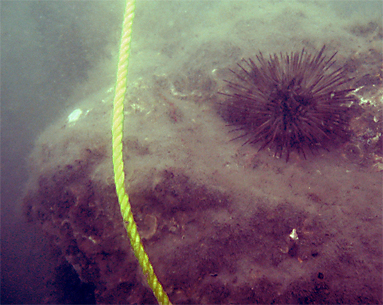I am a lucky man. My position as director of the online Museum of Underwater Archaeology (MUA) has allowed me to work with some of the best folks in underwater archaeology. Back in February I was fortunate enough to host the Flinders University spring field school journal on the MUA. Today I’m down in St. Augustine, FL visiting with the Flinders staff and students, many of whom I’d met via email as we received their daily entries. This time I’m visiting them as they conduct what Flinders University underwater archaeologist Mark Staniforth refers to as a practicum rather than a field school.
The goal here is to give the students additional hands on experience. These types of activities are a critical part of what transforms students into professionals. Over the next few days I’ll be assisting with some of the field work, taking photographs for a future posting on the MUA by Jennifer McKinnon, and perhaps shooting some video of this group in action.

My dive buddy Mark Opdyke.
As this is the third training opportunity I’ve been able to witness as Director the MUA I have noticed how graduate students in classes such as these change over time. I could see it in the student’s writing over the course of previous field school journals and then in the way those students worked in this practicum, or in the case with East Carolina University students, how some became crew chiefs helping the next class.

One of the guide lines connecting sections of the wreck site.
Today I accompanied several of the students and staff on a reconnaissance dive on a possible nineteenth-century steamboat. Our goals included locating the wreck, laying some guidelines to help divers travel from one area of wreckage to another, and a searching for additional elements of the site. What stood out to me today was how efficient most of our activities went. Sure, there were the typical first day in the field issues to shake out that occur in any project but on the whole I was impressed with how smoothly things went. When issues did occur, such as a forgotten piece of equipment, work arounds were quickly developed that kept the project going. THAT is the sign of a good crew. All of today’s goals were completed and I’m pleased to have had the opportunity to help. Meanwhile back at the ranch, or in this case the lighthouse, another group of students were busy helping document a wooden rudder. Here too I witnessed students helping each other to gather accurate data. Finally, I hungrily dove into the pasta the students prepared for dinner.

Setting the line level for recording details of the rudder.
This was the start of a five day visit for me. Hopefully I’ll not get in anyone’s way and perhaps even contribute some to the cause of educating the next group of underwater archaeological professionals. As I said, I am a lucky man.

